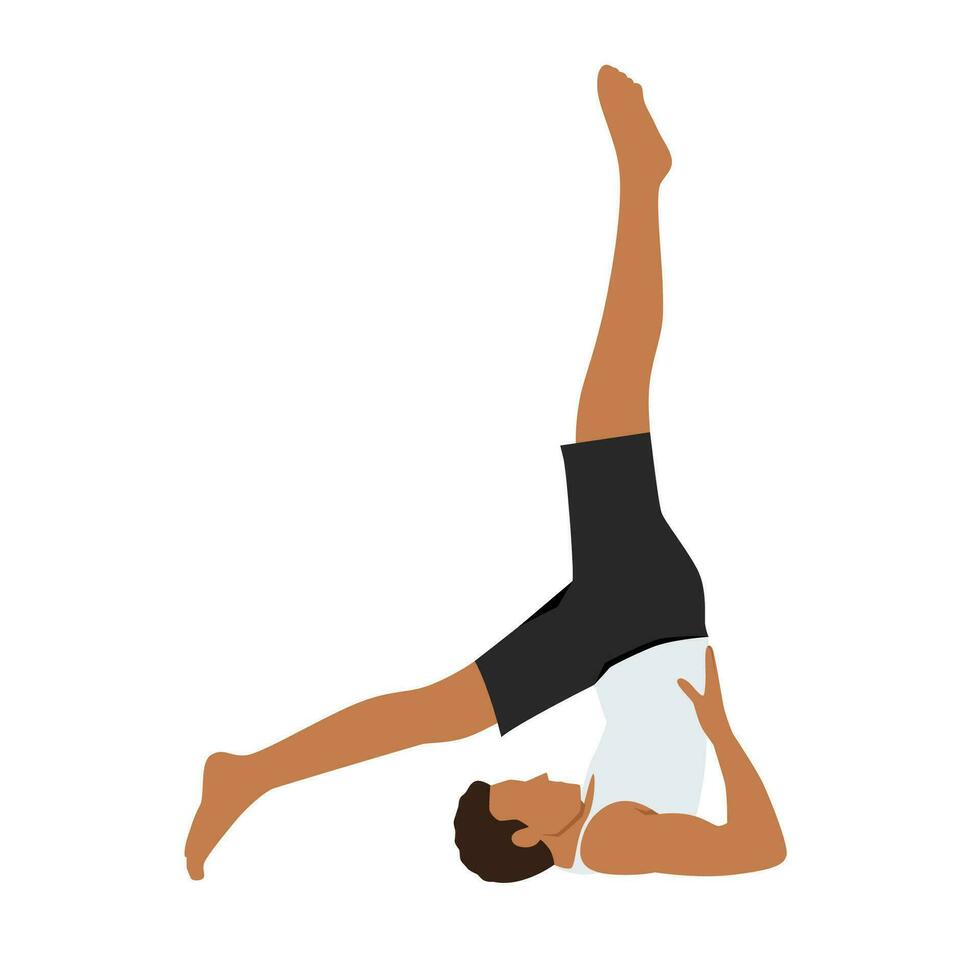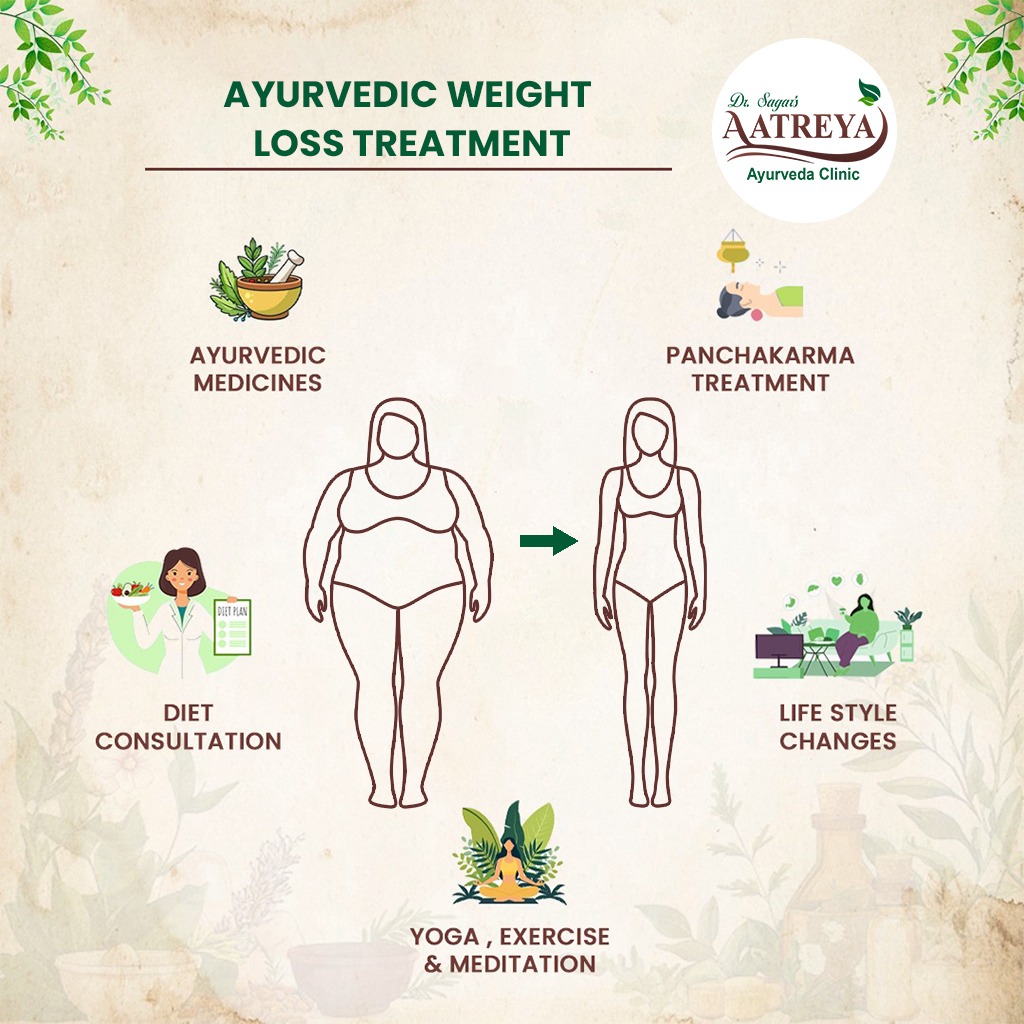Sthaulya, an Ayurvedic term for obesity, is understood through various ancient texts :
- Sushruta Samhita links Sthaulya to impaired metabolic fire (DhatvaagniMandya), leading to issues with fat tissue (Medadhatu).
- Vagbhatta and Vridha Vagbhatta explain Sthaulya's development through the formation of toxins (Ama) and altered tissue proportions (Dhatuparimana).
- Madhava Nidana focuses on the increased quantity of fat tissue (Meda) as the core pathophysiological factor.
- Yogaratnakar also uses the term Medoroga to describe Sthaulya, emphasizing the role of fat tissue.
Pathogenesis of Obesity in Allopathic Science :
- Increased Fat Storage
This happens with the over-consumption of carbohydrates, proteins, and fats than the body needs. The extra nutrients then get converted into fat and are stored in the body's fat reserves. - Reduced Fat Release
It refers to the body's inability to break down and release stored fat. Causes can range from imbalances in fat-mobilizing hormones (like thyroid hormones and adrenaline), issues with cells, or problems with nerve signals. Fats that remain unreleased the right way accumulate leading to obesity. - Decreased Fat Burning
This occurs when the body doesn't effectively use stored fat for its energy needs. Factors like aging, problems with fat oxidation, issues with heat production (thermogenesis), or a lack of physical activity contribute to this. This is a common cause of obesity, especially in the middle-aged.
Pathogenesis of Obesity According to Ayurvedic Science :
Obesity is put into the group of eight conditions that form unsightly and defective body types and constitution as described by Acharya Charaka. This classification by itself makes it known that Ayurveda doesn’t treat the issue as a simple case of aesthetics but of one which strongly includes physical and mental health.
Sthaulya is a result of “Meda Dhatu doṣa” which in modern terms refers to issues arising out of fat tissues. It’s mainly an issue of weak “Dhatvagni” or the metabolic fire responsible for transforming the digested food into body tissue becoming feeble. According to the Ayurvedic view of nutrition and metabolism, what is absorbed of the food we eat i.e., the Ahara Rasa, is put into the body’s tissue where it goes from “Rasa” or plasma to the final product “Shukra” or reproductive tissues. But when the “Meda Dhatu” related metabolic fires are weak or impaired, a condition called “‘Medodhatvagnimandya”, the transformation of food into healthy fat does not happen as desired. What it results in is the over production of “Meda” and its abnormal accumulation in different parts of the body.
Also, in addition to what is known, Acharya Sushruta brings in a different perspective which is of improper digestion which he says leads to the production of Ama, a toxin borne out of incomplete digestion. This Ama in turn mixes with Rasa (which is the nourishing element) and gets stored as unnecessary and unrefined fat in the body. These deposits not only add to our body weight, they also clog the Srotas (micro channels) which in term causes the flow of Vata (air element) to be restricted besides slowing down metabolism which in turn brings us to the beginning of a cycle of weight gain and health deterioration.
Causes of Obesity in Ayurveda :
1. Dietary Factors (AharatmakaHetu)
These relate to unhealthy eating habits:
- Overeating (Atisampurnata): In Ayurveda it is noted that one of the main causes of Sthaulya is that we eat way too much, especially foods that are heavy, sweet and fatty, as also cold foods.
- Eating before digestion of previous meal (Adhyashana): It causes the build-up of undigested nutrients that on its part turns into extra fat.
- Consuming heavy foods (GuruAharaSevana)
- Consuming excessive quantities of sweets (MadhurAharaSevana)
- Cold foods (SitaAharaSevana)
- Oily/fatty foods (SnigdhaAharaSevana)
- New grains/foods (NavannaSevana) we consume large quantities of newly harvested grains (Navanna) which the body has difficulty in breaking down.
2. Lifestyle Factors (ViharatmakaHetu)
As regards Ayurvedic Treatment for weight-loss, lifestyle factors that negatively affect health include:
- Lack of exercise (Avyayama)
- Lack of sexual activity (Avyavaya)
- Daytime sleeping (Divaswapa)
- Excessive sleep (Atinidra)
- Comfortable/sedentary lifestyle (SukhShaiyaSevana)
These actions put a break on the natural flow of energy in the body and cause an accumulation of Kapha and Meda in the system. Also, sexual inactivity (avyavaya) and too much comfort (sukhshayya) in turn disrupt the flow of energy and the metabolic processes thus setting the stage for obesity.
3. Mental Factors (ManasikaHetu)
These relate to one's mental state:
- Constant happiness/ lack of worries (Harshanityatvat)
- Lack of thinking/worrying (Achintanat)
- Mental inactivity (ManasoNivriti)
Mental and emotional health is also a core element in Ayurvedic discussion of Sthaulya, i.e., obesity. A constant immersion in pleasurable feelings (Harsha), lack of mental engagement and stimulation (Achintana), and mental fatigue (Manaso Nivritti) play a role in bringing about hormonal and metabolic imbalances. Ayurveda presents the mind and body as one in this framework and any disturbance in either system is known to affect the other. Others include cases of hereditary predisposition or Beejadosha, hormonal imbalances, and things taking place at life stages like puberty and pregnancy. These either singularly or together bring about changes to one’s metabolism and tissue production.
Complications (Upadrava) of Obesity (Sthaulya) in Ayurveda :
Chronic obesity, or Sthaulya, may lead to severe complications affecting various bodily systems and organs, ultimately increasing the risk of death. Ayurveda describes the following potential complications:
- Digestive Issues:
- Indigestion/Toxins (Amaroga)
- Diarrhea (Atisara)
- Abdominal disorders (Udarroga)
- Skin and Swellings:
- Abscesses/Lymphadenitis (Apachi)
- Piles (Arsha)
- Fistula-in-ano (Bhagandara)
- Skin diseases (Kustha)
- Filariasis (Shlipada)
- Diabetic carbuncles (Pramehapidika)
- Metabolic and Urinary Disorders:
- Urinary difficulty/Dysuria (MutraKriccha)
- Diabetes (Prameha)
- Other Systemic Issues:
- Fever (Jwara)
- Jaundice (Kamla)
- Cough (Kasa)
- Loss of consciousness/Collapse (Sanyasa)
- Thigh stiffness/Heaviness (Urusthambh)
Treatment for Weight Loss Under Ayurveda :
Acharya Charaka classified Sthaulya (obesity) as a disease caused by over-nourishment (SantarpanotthaVikara). Its treatment therefore should involve a “reducing” therapy (Apatarpan – Weight loss treatnent)
The Ayurvedic approach to weight loss aims at more than just weight loss. It tries to achieve balance, detoxify the body, and nourish the tissues. The treatment has facets that can be divided into two primary categories: Shodhana (purification) and Shamana (palliative care).
The Shodhana part of therapy consists of cleansing processes to detoxify. It is administered particularly when severe imbalance in the body’s elements is clearly visible, and when the individual has the intrinsic strength to handle the treatments. Vamana (therapeutic emesis) and Virechana (therapeutic purging) are used more commonly to eliminate the Meda and Kapha Pitta from the body. Niruha Basti (herbal decoction enema) is also given to Vata dominant individuals for colon detoxification and is used to balance Vata. In certain circumstances, Raktamokshana (blood-letting) is also resorted to.
When a moderate level of aggravation is prevalent in one’s body, such a state is not good enough to undergo rigorous detox, Shaman is recommended in such cases. Here, dietary changes and Ayurvedic medicines are administered which revive the digestive fire, repair the metabolic system and assist in the excretion of toxins from the body. Deepana and Pachana are also regular administrations, in order to stimulate the appetite as also aid in metabolism during treatments such as Langhana (lightening treatment) and Rukshana (drying treatment). The latter are said to assist in the work of reducing surplus Meda Dhatu.
As a system of medication that goes beyond focusing on symptons, Ayurveda instead attempts to restore the body to a state of Star equanimity. To this end, it adopts a holistic, sustainable, comprehensive and individually tailored treatment approach, with the aim of delivering optimal outcomes.
Lifestyle and Diet modification :
Ayurveda is beyond medication and the treatment of symptoms. That being so, it places a lot of importance on the protection of the healed concerned and preventive care. In order to achieve this, it prescribes dietary and lifestyle changes that, when incorporated, allow for long term benefits, especially in the case of obesity.
For dietary changes, Ayurveda recommends foods that are higher in natural fibre, easily digestible, freshly cooked and wholesome. A balanced diet of fibre, carbs and protein is suggested. Foods high in sugar, salt and preservatives aare frowned upon and processed foods and dairy items are also advised to be avoided.
Ayurvedic nutritive ideology promotes the consumption of foods like green leafy vegetables, salads, whole grains, and pulses which while enhancing satiety, also help improve bowel movements and overall metabolism.
Along with a clean diet, Ayurveda advocates regular, consistent and moderate exercise as a major lifestyle non-negotiable. A mix of yoga and walking is recommended, since yoga and its asanas help tone the body and balance the internal systems while walking is accessible and highly effective for everyone, no matter what age group or concern.
Apart from this, one is also required to sleep in a regular time frame and get an adequate eight hours of rest. In case of obesity, a good, healthy sleep cycle and routine is key in aiding fat loss and internal balance.
Some Yoga-Asana for Weight Loss

Chaturanga Dandasana (Plank Pose)

Trikonasana (Triangle Pose)

Dhanurasana (Bow Pose)

Sarvangasana (Shoulder stand Pose)
The Ayurvedic Path to Overcoming Obesity :
Sthaulya i.e., obecityis a disorder which takes root from impaired lifestyles and diets, which lead to a hampered metabolic system, a compromized digestive system and emotions that run wild. All of these are affected by things that aggravate the doshas. Ayurveda, unlike other means of medication and health, does not view obesity as just an issue of heightened body fat but rather as a deep-seated concern which has various disruptive factors that act simultaneously. And thus, instead of extreme diets or rigorous exercise, it treats obesity through detoxification, balancing the doshas, lifestyle adjustments, mental practices and of course, clean eating. Obesity is a rising concern, which people around the world are suffering for the longest of time. But that does mean that Sthaulya or obesity is unconquerable. Ayurvedic treatments have proven time and again that any concern, even obesity, can be cured.
Conclusion :
Pimple Nilakh residents seek the help of our weight loss Aatreya Ayurvedic Clinic, as it is an Ayurvedic clinic which proved its success story in providing natural, sustainable results. Our Ayurvedic doctors for weight loss design person-specific treatment plans that help you lose weight sustainably with improvements in digestion, increased energy levels, and an overall feeling of well-being. Choose Ayurvedic weight loss treatment with us, with the assurance of receiving expert assistance, continued support, and a treatment plan designed to fit your lifestyle.
FAQs :
-
1. How does Ayurveda view Obesity?Ayurveda views obesity as an imbalance of doshas and not just overeating or overindulgence.
It’s roots can be traced in the body to obstruction of the bodily channels and the impairment of the digestive system as well as the hinderance caused to the metabolic system, all of which can be explained by the fact that the body is dys functioning in terms of its doshas. -
2. Ayurvedic therapy of Weight Loss?Ayurveda has an individualised and whole-body approach to obesity. In addition to providing herbal medications designed to balance the body's doshas, this approach incorporates therapies such as Panchakarma for detoxification. It also involves recommending dietary and lifestyle modifications that support the treatment of obesity and promote overall well-being.
-
3. Are Vaman and Virechan assistive in the weight loss process?Yes, Vamana and Virechana are extremely useful in facilitating the task of weight loss as in these they flush out the impurities in the body of the affected person and even correct the dosha which have been thrown out of balance.
-
4. Does Ayurveda treatment help in Weight Loss?Obesity can be cured effectively and conclusively by Ayurveda. The best thing about being treated under it is that it works best when the person observes dietary and lifestyle changes prescribed by the Ayurvedic practitioner.

